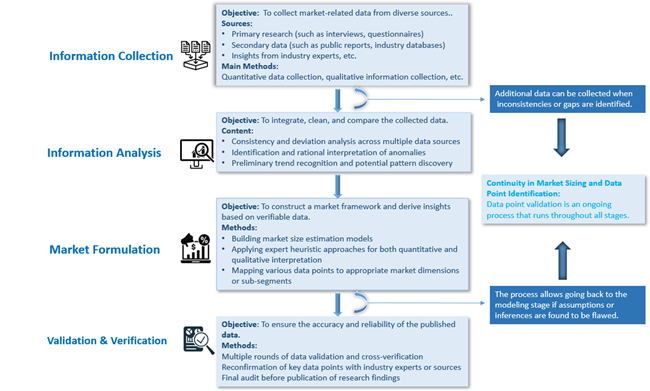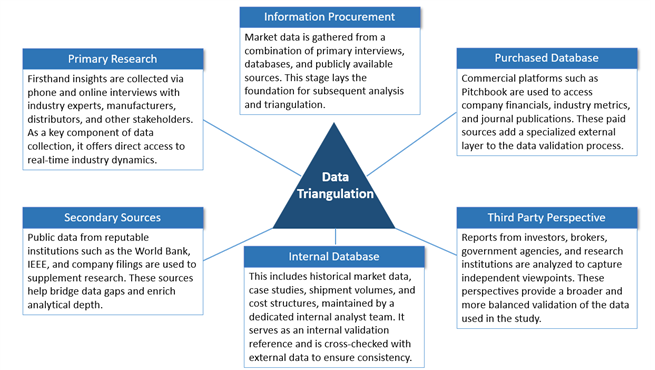Ultra-high molecular weight polyethylene is a linear-structured engineering plastic with excellent comprehensive properties. UHMWPE has extremely long molecular chains arranged in the same direction and intertwined with each other. By strengthening intermolecular interactions, these longer chains can transfer loads more efficiently to the main backbone, giving UHMWPE a very high specific modulus and specific strength.
Its wear resistance ranks first among plastics—several times more wear-resistant than carbon steel and brass, and tens of times higher than that of conventional polyethylene. Furthermore, as molecular weight increases, wear resistance improves even further. Its coefficient of friction is lower than that of most engineering plastics, comparable to polytetrafluoroethylene (PTFE), making it an ideal self-lubricating material. Owing to its excellent wear and lubrication properties, UHMWPE is widely used in artificial joints.
UHMWPE has exceptional water resistance, with an extremely low water absorption rate—among the lowest of all engineering plastics. Its impact resistance is also the highest among engineering plastics, 3–5 times that of polycarbonate, which is itself known for high impact strength. Due to its predominantly linear molecular structure and structural features required for ultra-drawing orientation, UHMWPE has a tensile strength of up to 3–3.5 GPa and a tensile modulus of 100–125 GPa.
It also offers outstanding chemical resistance, tolerating various corrosive media and organic solvents within certain temperature and concentration ranges. It maintains excellent low-temperature performance, retaining good impact strength even below freezing, with a minimum service temperature down to –269 °C. In addition, UHMWPE exhibits good non-stick properties, is non-toxic, has excellent electrical insulation, better fatigue resistance than HDPE, and superior gamma-ray resistance.
The following is a comparison of the performance of UHMWPE products and other engineering plastics:
|
Performance Index |
UHMWPE |
PTFE |
Nylon 66 |
Polycarbonate |
Index Description |
|
Density (g/cm³) |
0.93–0.945 |
2.16 |
1.14 |
1.2 |
Mass per unit volume of the material |
|
Tensile Strength (kg/cm²) |
400–500 |
200 |
750 |
640 |
Ability of a material or component to resist breaking under tensile load |
|
Elongation at Break (%) |
300–350 |
300 |
200 |
110 |
Higher elongation indicates better flexibility and elasticity |
|
Impact Strength (kJ/m²) |
— |
16 |
11 |
80 |
Indicator of a material's ability to resist impact |
|
Brinell Hardness (D) |
40 |
— |
100 |
118 |
Hardness measured by Brinell method |
|
Coefficient of Dynamic Friction |
0.2 |
0.2 |
0.4 |
— |
Higher values indicate rougher surfaces and greater sliding resistance |
|
Water Absorption (%) |
0.01 |
0.02 |
1.5 |
0.15 |
Percentage of water absorbed by the material over time |
Market Overview:
According to LookWhole Insight, the global Ultra-High Molecular Weight
Polyethylene (UHMWPE) market is projected to reach USD 958.13 Million in 2024.
It is expected to grow to USD 2429.15 Million by 2033, registering a compound
annual growth rate (CAGR) of 10.89% during the forecast period (2025–2033). - LookWhole Insight
Technical Barriers
1.
Catalyst
The catalyst is the core of UHMWPE production technology. Ethylene
polymerization is mainly influenced by polymerization temperature, pressure,
catalyst composition and dosage, external electron donors, and hydrogen. The
catalyst plays a decisive role in key properties such as average molecular
weight, molecular weight distribution, bulk density, crystallinity, and
particle size and morphology of the polymer.
After more than half a century of development, catalyst performance and manufacturing technology have advanced rapidly. The main catalysts for UHMWPE are Ziegler–Natta (Z–N) catalysts, metallocene catalysts, and non-metallocene transition metal catalysts.
Z–N catalysts are currently the only ones used in industrial-scale production. They offer simple preparation, low cost, and low sensitivity to impurities, making them the most widely applied catalysts worldwide for UHMWPE. There are many subtypes, but Z–N catalysts have shortcomings, such as poor copolymerization capability and relatively broad molecular weight distribution, which can limit mechanical property enhancement.
Metallocene catalysts have higher catalytic activity and can produce polymers with narrow molecular weight distributions, thereby achieving better mechanical properties. However, their lower achievable molecular weight and higher cost have so far prevented their commercial use in UHMWPE production.
Non-metallocene transition metal catalysts have achieved certain breakthroughs at the laboratory scale, but challenges in the key catalyst-supporting process remain unresolved, keeping them from mass production.
At present, leading international companies such as Celanese (USA), Mitsui Chemicals (Japan), Braskem (Brazil), DSM (Netherlands), and Korea Petrochemical, as well as domestic resin producers including Shanghai Research Institute of Chemical Industry Co., Ltd., primarily use Z–N catalysts for UHMWPE resin production.
2. Polymerization Process
Most industrial UHMWPE resin production facilities adopt slurry polymerization, mainly in the form of stirred tank (reactor) or loop reactor processes.
Stirred Tank Polymerization: Includes the Hostalen process and Mitsui’s CX process. Currently, the majority of UHMWPE polymerization uses the Hostalen stirred-tank process, which involves two reactors in series. Ethylene, hydrogen, and catalyst are fed into the first reactor to produce resin with a relatively high melt index. The resulting polymer slurry then enters the second reactor to complete the polymerization of the remaining ethylene.
This process features low operating pressure and temperature, high operational flexibility, stable production, strong catalyst impurity tolerance, and low ethylene purity requirements. Over two-thirds of the world’s UHMWPE polymerization adopts the Hostalen stirred-tank process.
Loop Reactor Polymerization: Includes Phillips’ single-loop process and Ineos’ Innovene S double-loop process. Both use isobutane as the reaction medium. Unlike stirred tanks, the loop reactor relies on an axial pump to circulate materials at high speed, removing polymerization heat efficiently. Phillips uses a modified silica or alumina-supported catalyst and does not require hydrogen during polymerization, lowering capital investment but demanding higher catalyst quality.
The Innovene S process is mature, with a compact layout, stable product quality control, short material residence time, and quick grade transitions, though it requires higher capital investment and catalyst quality.
The following is a comparison of the performance of different types of UHMWPE catalysts:
|
Process |
Flow Description |
Advantages |
Disadvantages |
|
Hostalen |
Twin stirred-tank reactors in series or parallel, using n-hexane as solvent, heat removed by jacket water |
Flexible production, fast grade switching, good stability, strong impurity tolerance, low raw material purity requirement |
Less efficient heat removal compared to loop process, lower capacity |
|
CX |
Twin stirred-tank reactors in series or parallel, using n-hexane as solvent, heat removed by n-hexane evaporation |
Fast grade switching, good stability, strong impurity tolerance, low raw material purity requirement |
Limited heat removal capability, low single-line capacity |
|
Phillips |
Single loop reactor, axial flow pump circulation, using isobutane as solvent, heat removed by cooling water |
Lower capital investment, strong heat removal capability, high capacity, stable product quality |
High catalyst requirements |
|
InnoveneS |
Dual loop reactors in series, using isobutane as solvent, heat removed by cooling water |
Precise process control, stable product quality, short material residence time, high capacity |
High capital investment, high catalyst requirements |
Key Development Trends
1. UHMWPE Fiber
Ultra-high molecular weight polyethylene (UHMWPE) fiber is spun from polyethylene resin with a molecular weight exceeding 1 million. Its elongation at break is higher than that of carbon fiber and aramid fiber, offering excellent flexibility. It maintains good mechanical properties under high strain rates and low temperatures, and its impact resistance surpasses that of carbon fiber and aramid, making it an ideal protective material. UHMWPE fiber is gradually being further developed and is widely applied in military equipment, marine industries, safety protection, sports equipment, and other fields. Industrial-scale production has been successful for nearly 30 years, and with continuous improvements in manufacturing technology and product performance, along with expansion of downstream applications, current supply is still insufficient to meet demand.
2. UHMWPE Pipes
UHMWPE pipes are widely used in petrochemical engineering, river and sea dredging, tailings transportation, and marine buoys due to their outstanding corrosion resistance, heat resistance, wear resistance, contamination-free performance for conveyed media, long service life, and low manufacturing and installation costs. Their wear resistance is 4 times that of HDPE and 7–10 times that of carbon steel or stainless steel. The friction coefficient is only 0.07–0.11, offering excellent self-lubrication. UHMWPE pipes also have high impact strength, maintaining considerable toughness even at low temperatures, and possess excellent internal pressure resistance and environmental stress cracking resistance.
3. UHMWPE Sheets
UHMWPE sheets are widely used in fender panels, vehicle sliding plates, coal bunker liners, roller skating boards, railway and highway bridge bearing pads, and artificial joints. Currently, more than 90% of liners in artificial joint materials are made from UHMWPE. Globally, there are approximately three million joint replacement surgeries annually, and wear and damage of UHMWPE components are the main factors limiting the lifespan of artificial joints. UHMWPE was first applied to joint liners and pads in 1960. However, the wear resistance of conventional UHMWPE resin was initially insufficient for long-term joint use. Research institutions and companies, including Massachusetts General Hospital in the U.S., developed cross-linked UHMWPE, which significantly reduced joint wear and received FDA approval for clinical use in 1998. Subsequently, vitamin E–enhanced polyethylene, combining antioxidant and wear-resistant properties, was developed in Europe and the U.S. and received FDA approval in 2009. In China, UHMWPE has been gradually used for joint liners since 1990.
4. UHMWPE Separators
UHMWPE separators are high-end battery separators suitable for high-efficiency, high-power batteries. With the rapid development of new energy vehicles, battery safety has become a critical concern, increasing performance requirements for separators. UHMWPE, due to its ultra-high molecular weight, offers advantages in producing lithium battery separators, including wear resistance, impact resistance, chemical corrosion resistance, and low-temperature performance. Its mechanical and thermal properties surpass those of conventional PE and PP, giving it excellent overall performance. UHMWPE separators are premium products in lithium batteries, and at high temperatures, the melt forms a gel-like state, maintaining structure and preventing collapse. They provide superior safety against short circuits or explosions caused by overcharging or sudden temperature spikes, making them particularly suitable for high-efficiency, high-power power batteries.
Global Ultra-High Molecular Weight Polyethylene (UHMWPE) Market: Competitive Landscape
In 2016, global UHMWPE production capacity and demand reached 221,000 tons and 200,000 tons, respectively. As manufacturing demands increasingly stringent material properties, UHMWPE, with its superior properties, holds broad market prospects. By 2021, UHMWPE production and demand are expected to reach 380,000 tons and 367,000 tons, respectively.
Celanese, the company with the highest global production capacity, has established UHMWPE production bases in Germany, the United States, and Nanjing, China. With the commissioning of a 15,000-ton production line in early 2022, Celanese's total production capacity has reached 120,000 tons, accounting for approximately 30% of the global total.
Other UHMWPE manufacturers include Braskem in Brazil, and DSM in the Netherlands. Braskem in Brazil has a total production capacity of approximately 45,000 tons per year.
At the same time, the production capacity of Chinese companies has begun to grow rapidly. As of August 2024, China's total domestic ultra-high molecular weight polyethylene production capacity is about 250,000 tons/year, with 340,000 tons of capacity under construction and another 480,000 tons/year of new capacity planned.
Report Framework and Key Highlights:
Market Dynamics: Identification of major market drivers, restraints, opportunities, and challenges.
Trend Analysis: Examination of ongoing and emerging trends impacting the market.
Competitive Landscape: Detailed profiles and market positioning of major players, including market share, operational status, product offerings, and strategic developments.
Strategic Analysis Tools: SWOT Analysis, Porter’s Five Forces Analysis, PEST Analysis, Value Chain Analysis
Market Segmentation: By type, application, region, and end-user industry.
Forecasting and Growth Projections: In-depth revenue forecasts and CAGR analysis through 2033.
This report equips readers with critical insights to navigate competitive dynamics and develop effective strategies. Whether assessing a new market entry or refining existing strategies, the report serves as a valuable tool for:
Industry players
Investors
Researchers
Consultants
Business strategists
And all stakeholders with an interest or investment in the Ultra-High Molecular Weight Polyethylene (UHMWPE) market.
Global Ultra-High Molecular Weight Polyethylene (UHMWPE) Market: Segmentation Analysis and Strategic Insights
This section of the report provides an in-depth segmentation analysis of the global Ultra-High Molecular Weight Polyethylene (UHMWPE) market. The market is segmented based on region (country), manufacturer, product type, and application. Segmentation enables a more precise understanding of market dynamics and facilitates targeted strategies across product development, marketing, and sales.
By breaking the market into meaningful subsets, stakeholders can better tailor their offerings to the specific needs of each segment—enhancing competitiveness and improving return on investment.
Global Ultra-High Molecular Weight Polyethylene (UHMWPE) Market: Market Segmentation Analysis
The research report includes specific segments by region (country), manufacturers, Type, and Application. Market segmentation creates subsets of a market based on product type, end-user or application, Geographic, and other factors. By understanding the market segments, the decision-maker can leverage this targeting in the product, sales, and marketing strategies. Market segments can power your product development cycles by informing how you create product offerings for different segments.
|
ATTRIBUTE |
Details |
|
|
Time Coverage |
Historical Year: 2020– 2024 Base Year: 2024 Estimated Year: 2025 Forecast Year: 2025 - 2033 |
|
|
Market Segmentation |
||
|
By Type |
Hostalen Process CX Process Phillips Process InnoveneS Process Other |
|
|
By Application |
Battery separators Fibers Sheets Industrial pipes Other |
|
|
By Company |
Celanese Mitsui Chemicals, Inc. Braskem S.A. DSM Korea Petrochemical Ind. Co., Ltd. Henan Watson Ultra-High Chemical Technology Co., Ltd. Anhui Fengda New Materials Co., Ltd. LyondellBasell Zhongxi New Materials (Anhui) Co., Ltd. Shenghong Holding Group Levima Advanced Materials Yangzi Petrochemical Co., Ltd. Daqing Petrochemical Co., Ltd. Yanshan Petrochemical Co., Ltd. Usi Shanghai Lianle Chemical Technology Co., Ltd. Jiujiang Zhongke Xinxing New Materials Co., Ltd. PetroChina Liaoyang Petrochemical Company Pingyuan Xinda Chemical Co., Ltd. Nanjing Jinling Plastic & Chemical Co., Ltd. Hubei Yuhong Advanced Materials Technology Co., Ltd. |
|
|
By Region |
North
America |
|
Report Framework and Chapter Summary
Chapter 1: Report Scope and Market Definition
This chapter outlines the statistical boundaries and scope of the report. It defines the segmentation standards used throughout the study, including criteria for dividing the market by region, product type, application, and other relevant dimensions. It establishes the foundational definitions and classifications that guide the rest of the analysis.
Chapter 2: Executive Summary
This chapter presents a concise summary of the market’s current status and future outlook across different segments—by geography, product type, and application. It includes key metrics such as market size, growth trends, and development potential for each segment. The chapter offers a high-level overview of the Ultra-High Molecular Weight Polyethylene (UHMWPE) Market, highlighting its evolution over the short, medium, and long term.
Chapter 3: Market Dynamics and Policy Environment
This chapter explores the latest developments in the market, identifying key growth drivers, restraints, challenges, and risks faced by industry participants. It also includes an analysis of the policy and regulatory landscape affecting the market, providing insight into how external factors may shape future performance.
Chapter 4: Competitive Landscape
This chapter provides a detailed assessment of the market's competitive environment. It covers market share, production capacity, output, pricing trends, and strategic developments such as mergers, acquisitions, and expansion plans of leading players. This analysis offers a comprehensive view of the positioning and performance of top competitors.
Chapters 5–10: Regional Market Analysis
These chapters offer in-depth, quantitative evaluations of market size and growth potential across major regions and countries. Each chapter assesses regional consumption patterns, market dynamics, development prospects, and available capacity. The analysis helps readers understand geographical differences and opportunities in global markets.
Chapter 11: Market Segmentation by Product Type
This chapter examines the market based on product type, analyzing the size, growth trends, and potential of each segment. It helps stakeholders identify underexplored or high-potential product categories—often referred to as “blue ocean” opportunities.
Chapter 12: Market Segmentation by Application
This chapter analyzes the market based on application fields, providing insights into the scale and future development of each application segment. It supports readers in identifying high-growth areas across downstream markets.
Chapter 13: Company Profiles
This chapter presents comprehensive profiles of leading companies operating in the market. For each company, it details sales revenue, volume, pricing, gross profit margin, market share, product offerings, and recent strategic developments. This section offers valuable insight into corporate performance and strategy.
Chapter 14: Industry Chain and Value Chain Analysis
This chapter explores the full industry chain, from upstream raw material suppliers to downstream application sectors. It includes a value chain analysis that highlights the interconnections and dependencies across various parts of the ecosystem.
Chapter 15: Key Findings and Conclusions
The final chapter summarizes the main takeaways from the report, presenting the core conclusions, strategic recommendations, and implications for stakeholders. It encapsulates the insights drawn from all previous chapters.
About US
LookWhole Insight is a global leader in data analytics and market research, offering deep insights into industries, economies, and consumer behavior across the world. We deliver comprehensive data and analysis on thousands of products and services, making us the first choice for organizations pursuing growth and exploring untapped, blue ocean markets.
Our offerings include syndicated research reports, customized research solutions, and strategic consulting services. The LookWhole Insight database is trusted by prestigious academic institutions and Fortune 500 companies alike, providing a robust foundation to navigate both global and regional business environments. Our data spans 26 industries across 35 key economies, backed by thousands of metrics and detailed analyses.
As an independent provider of global business intelligence, we empower clients with market analysis and consumer insights that range from local to global, and from tactical to strategic. Our research solutions guide critical decisions on when, where, and how to scale your business with confidence.
Email: market@lookwhole.com
www.lookwholeinsight.com






